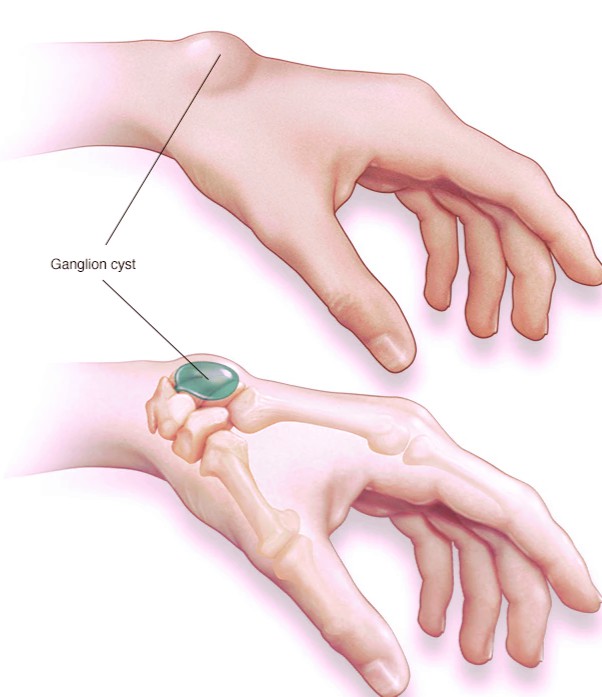Ganglion cysts
Comprehensive Guide to Ganglion Cysts: Causes, Symptoms, and Treatments
What is a Ganglion Cyst?
A ganglion cyst is a non-cancerous lump that forms around joints and tendons, resembling a balloon on a stalk filled with a thick, slippery fluid. Commonly found in the hand and wrist, ganglion cysts can develop on both the top and underside of the wrist, the end joint of a finger, the base of a finger, and over pully sheaths. These cysts vary in size and often enlarge with increased activity, shrinking with rest.
Causes of Ganglion Cysts
The exact cause of ganglion cysts is unknown. However, they are most frequently found in individuals aged 15 to 40, with women being more prone than men. Gymnasts, who put repeated stress on their wrists, are particularly susceptible. Mucous cysts, a type of ganglion cyst located at the end joint of a finger, are commonly associated with arthritis and are more prevalent in women aged 40 to 70.
Symptoms of Ganglion Cysts
Ganglion cysts typically present as visible lumps, although some smaller ones may remain hidden under the skin (occult ganglions). While many cysts are asymptomatic, they can cause pain, tingling, and muscle weakness if they exert pressure on surrounding nerves. The appearance of a large cyst can also cause anxiety or dissatisfaction due to cosmetic concerns.
Treatment Options for Ganglion Cysts
Nonsurgical Treatments
Observation: If the cyst is not causing pain or other symptoms, monitoring is often recommended since ganglion cysts can disappear on their own.
Immobilization: Using a splint can help reduce the size of the cyst and alleviate pressure on surrounding nerves. Once pain decreases, exercises are prescribed to strengthen the wrist and improve range of motion.
Aspiration: This involves draining the fluid from the cyst using a needle. However, this method often fails to eliminate the cyst permanently, as it does not remove the root or connection to the joint or tendon sheath, leading to a high recurrence rate.
Surgical Treatments
Surgery may be considered if nonsurgical methods fail or if the cyst recurs after aspiration. The surgical procedure, known as an excision, involves removing the cyst along with the stalk from which it arises, which may include part of the joint capsule or tendon sheath. Post-surgery, there is a small chance of recurrence. Recovery typically involves some tenderness, discomfort, and swelling, with normal activities resuming within 2 to 6 weeks. A hand therapist will guide the recovery process post-operatively.
Conclusion
Ganglion cysts are generally harmless and can often be managed with simple observation or nonsurgical methods. However, persistent or symptomatic cysts may require surgical intervention to ensure complete removal and prevent recurrence. If you suspect you have a ganglion cyst or need further information, consult with a healthcare professional for a proper diagnosis and tailored treatment plan.
By addressing the causes, symptoms, and various treatment options for ganglion cysts, this comprehensive guide provides essential information for individuals seeking to understand and manage this common condition effectively. If you have any concerns or require personalized advice, please contact our experienced medical team for assistance.

